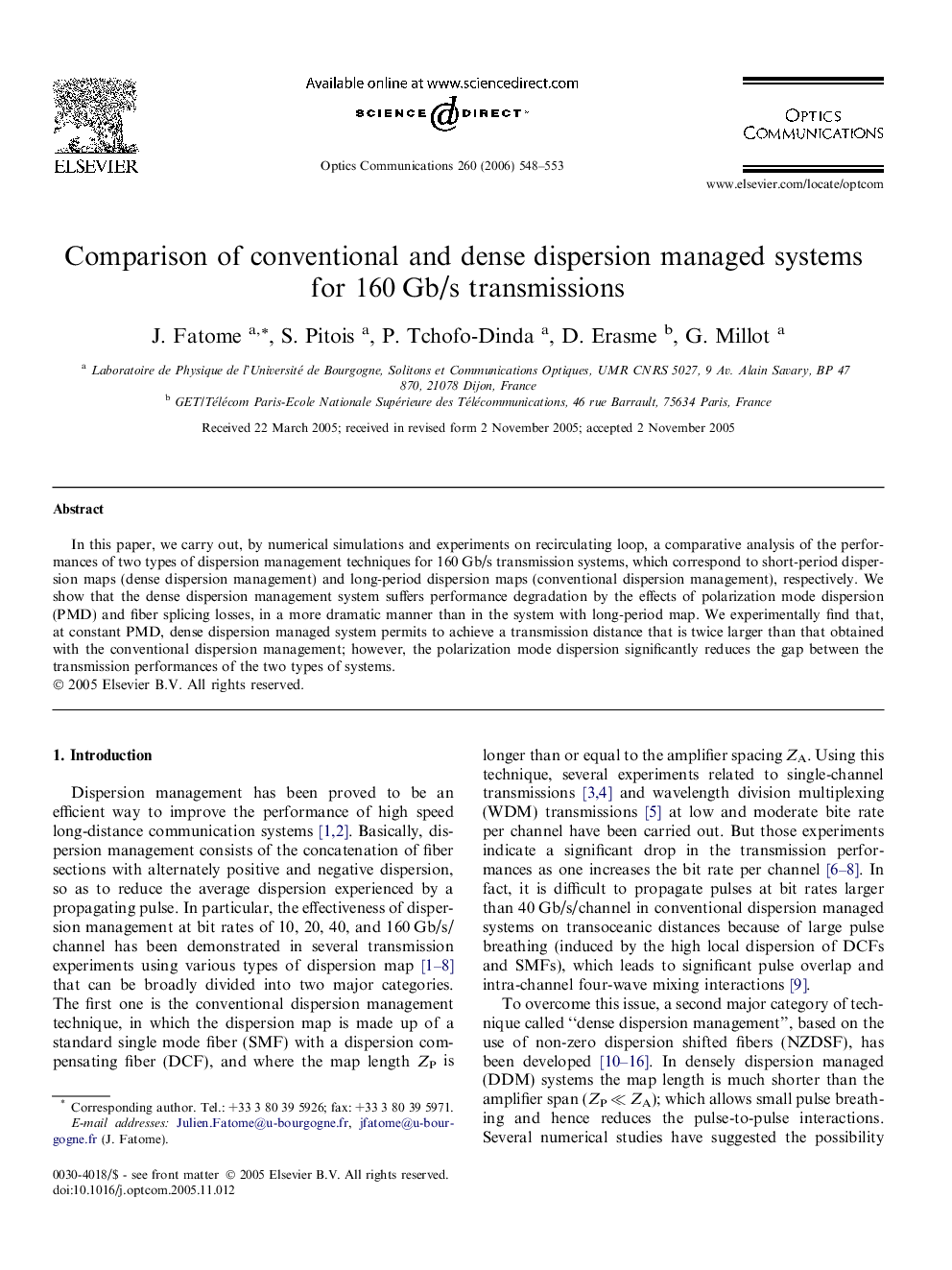| Article ID | Journal | Published Year | Pages | File Type |
|---|---|---|---|---|
| 1542603 | Optics Communications | 2006 | 6 Pages |
Abstract
In this paper, we carry out, by numerical simulations and experiments on recirculating loop, a comparative analysis of the performances of two types of dispersion management techniques for 160Â Gb/s transmission systems, which correspond to short-period dispersion maps (dense dispersion management) and long-period dispersion maps (conventional dispersion management), respectively. We show that the dense dispersion management system suffers performance degradation by the effects of polarization mode dispersion (PMD) and fiber splicing losses, in a more dramatic manner than in the system with long-period map. We experimentally find that, at constant PMD, dense dispersion managed system permits to achieve a transmission distance that is twice larger than that obtained with the conventional dispersion management; however, the polarization mode dispersion significantly reduces the gap between the transmission performances of the two types of systems.
Related Topics
Physical Sciences and Engineering
Materials Science
Electronic, Optical and Magnetic Materials
Authors
J. Fatome, S. Pitois, P. Tchofo-Dinda, D. Erasme, G. Millot,
